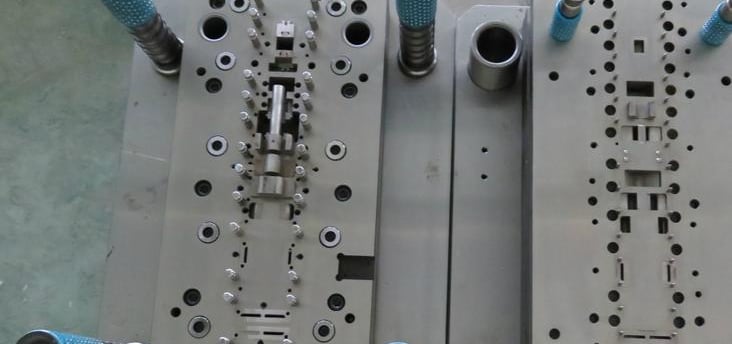Mold Design and Manufacturing: Common Misunderstandings and How to Avoid the Pitfalls
2/12/2025


Understanding Mold Design Fundamentals
Mold design is a critical component in the manufacturing process, particularly in industries utilizing injection molding techniques. The essentials of mold design encompass several key principles that significantly influence the effectiveness and efficiency of the final product. Essential factors include material selection, component geometry, and the implementation of cooling systems. Each of these elements contributes to the overall functionality of the mold, impacting production quality and cycle times.
Material selection is fundamental to mold design, as it determines the durability and thermal properties of the mold. Common materials for mold construction include steels and aluminum, each offering distinct advantages in terms of cost, machinability, and resistance to wear. Understanding the properties of these materials allows designers to make informed decisions that align with production requirements and long-term goals.
The geometry of components plays a significant role in the molding process. Thoughtful design of cavity shapes, draft angles, and surface finishes can minimize post-production work such as trimming and polishing. By ensuring that the mold design accommodates the specific characteristics of the material used—such as flowability and shrinkage—designers can help enhance the final product's quality.
Cooling systems are indispensable to mold design, greatly affecting cycle time and product quality. Properly designed cooling channels help maintain a consistent temperature throughout the mold, ensuring even cooling and reducing the risk of warpage. Strategies such as conformal cooling, which involves creating channels that closely follow the profile of the mold, have proven effective in optimizing thermal regulation.
Collaborating with experienced professionals in mold design is vital in overcoming common misconceptions and avoiding pitfalls. Their expertise can help ensure thorough planning in the design phase, ultimately leading to better manufacturing outcomes, increased efficiency, and reduced costs. Emphasizing these fundamentals allows companies to optimize their mold designs while effectively addressing any challenges that may arise during the manufacturing process.
Common Misunderstandings in Mold Manufacturing
The mold manufacturing industry is often riddled with misconceptions that can lead to significant inefficiencies and increased costs. One prevalent misunderstanding is that utilizing cheaper materials in mold fabrication will ultimately result in overall cost savings. While it may seem logical to choose lower-cost options, the truth is that inexpensive materials often compromise the durability and performance of the mold. This can lead to higher failure rates during production, resulting in increased downtime and additional costs associated with repairs or replacements. Thus, the long-term implications of such decisions often outweigh the initial savings.
Another misconception in mold design and manufacturing is the belief that any design can be easily accommodated without necessary adjustments. Many assume that once a design is created, it can be directly translated into the manufacturing process without consideration of the specific requirements of the mold. In reality, mold designs frequently require modifications to achieve the desired precision and functionality. The alignment of features, wall thickness, draft angles, and other design elements must be meticulously considered to ensure proper mold performance and ultimately the quality of the final product.
These misunderstandings in the mold manufacturing process can have far-reaching consequences, including delays in production schedules, poor product quality, and increased waste. When designs are not adequately adapted for manufacturing, the result can be defective products that fail to meet customer specifications. Furthermore, the rework and corrections needed to address these issues impose additional burdens on production efficiency and profitability. A clear understanding of the mold design and manufacturing process is crucial for avoiding these pitfalls, ensuring that both materials and designs are optimized for successful outcomes.
Strategies for Effective Mold Design and Manufacturing
Effective mold design and manufacturing are pivotal to achieving high-quality products while minimizing production costs and time. One of the foremost strategies in enhancing mold design is thorough prototyping. This essential phase involves creating a preliminary version of the mold, allowing designers and manufacturers to test and validate the design's functionality. By utilizing rapid prototyping techniques, teams can visualize the design and identify potential issues early in the process. Such proactive measures can lead to significant cost savings by reducing the need for extensive revisions during later phases of production.
Another critical strategy involves iterative testing, which entails conducting a series of evaluations at different stages of the design process. This methodology fosters continuous improvement by enabling design teams to gather data, analyze performance, and make necessary adjustments before committing to the final mold. By incorporating feedback loops, stakeholders can ensure that the design meets both functionality and aesthetic expectations. Furthermore, iterative testing minimizes the risk of defects, thereby ensuring product quality during mass production.
Continuous communication among stakeholders is equally vital in mold design and manufacturing. Collaborative frameworks involving designers, engineers, and manufacturers can streamline the workflow and facilitate a shared understanding of objectives and challenges. Regular meetings and update sessions can prevent misinterpretations and ensure that everyone is aligned on the project's goals. In addition, integrating modern software tools can significantly enhance this collaboration. Advanced simulation software allows designers to visualize and refine complex molds before entering the manufacturing phase. These tools aid in assessing material flow, cooling efficiency, and the effects of various processing parameters, thereby ensuring that the design is optimized for production.
By implementing these strategies—thorough prototyping, iterative testing, and effective communication—manufacturers can navigate the complexities of mold design, ultimately leading to successful outcomes in the production process.
Case Studies: Learning from Mistakes
Understanding the complexities of mold design and manufacturing is critical to avoiding common pitfalls. Several case studies illustrate the consequences companies face when misunderstandings occur in this field. One notable example is a mid-sized automotive parts manufacturer that launched a new product without thoroughly conducting a process feasibility study. This oversight led to inadequate mold designs, ultimately causing a production delay and increasing costs due to the necessity of redesigning and rebuilding the molds. The company faced significant financial losses and lost market credibility, highlighting the importance of thorough planning and research in mold design.
Another case involved a consumer electronics company that underestimated the implications of material selection in their mold manufacturing process. The chosen plastic was not compatible with the injection molding machine, resulting in inferior product quality. As a result, the company encountered high rejection rates during quality assurance checks, which not only delayed product launches but also impacted customer satisfaction. This case emphasizes the vital need for proper material evaluation to ensure compatibility with both design intentions and production processes.
Furthermore, a startup in the medical device sector overlooked the regulatory requirements associated with their mold design. The initial prototypes failed to meet the industry standards for safety and performance, leading to expensive redesigns and a disrupted timeline for product release. The lessons from these examples stress that a solid understanding of industry regulations is essential to successful mold manufacturing. By learning from these case studies, companies can implement proactive strategies that encompass thorough research, material compatibility checks, and adherence to regulatory standards to significantly reduce the risk of costly missteps in their mold design and manufacturing processes. Taking these lessons to heart can ultimately enhance efficiency, reduce expenditures, and bolster product quality.
